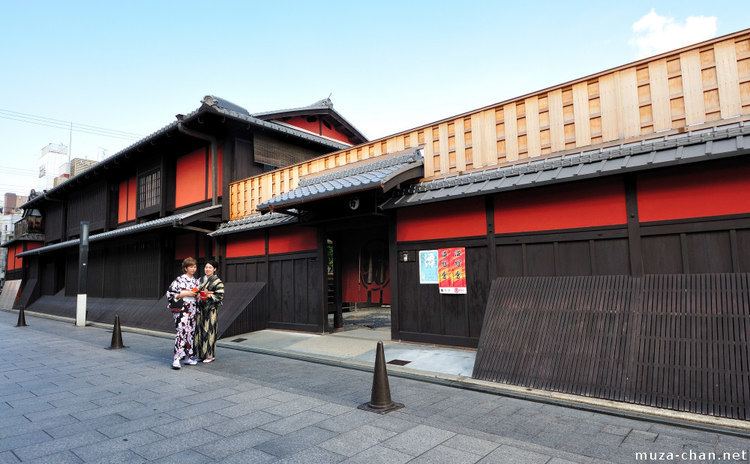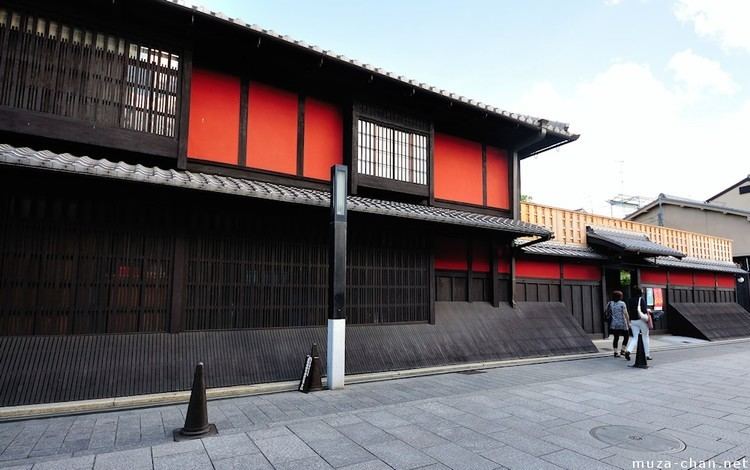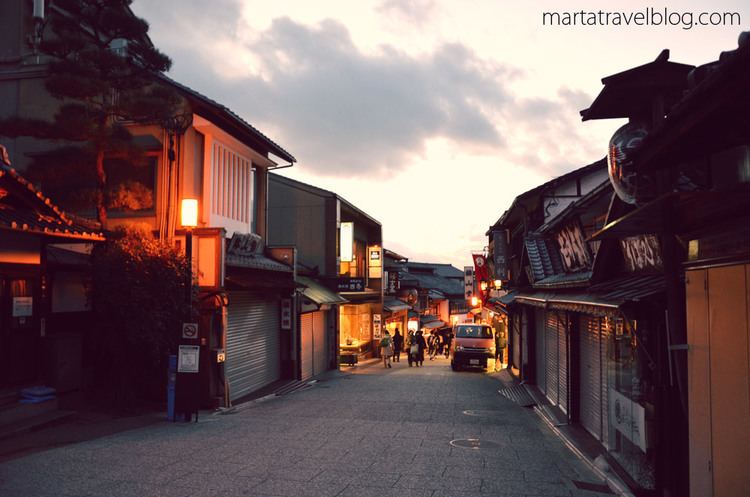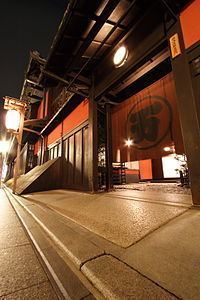 | ||
Best exotic dish horse sashimi at ichiriki chaya
Ichiriki-tei (一力亭, Ichiriki Mansion)) is one of the most famous and historic ochaya (geisha "tea house") in Kyoto, Japan. It is located at the southeast corner of Shijō Dori and Hanami Koji, with its entrance on Hanami Koji (Hanami Koji is in the heart of the Gion Kobu district). It is considered an exclusive and high-end establishment; access is invitation only and entertainment can cost upwards of 800,000 yen a night.
Contents
- Best exotic dish horse sashimi at ichiriki chaya
- History
- Name
- The Forty seven Ronin
- The Fall of the Shogun
- Access
- Services
- Architecture
- References

History

The Ichiriki is over 300 years old, and has been a major centerpiece of Gion since the beginning of the entertainment district. Like other ochaya in Gion, Ichiriki was a place where men of status and power went to be entertained by Geisha, who distracted guests through dancing, banter, and flirtation. Ichiriki has traditionally entertained those of political and business power.

The house is run by the Sugiura (杉浦) family, and the nameplate on the entrance gate reads Sugiura Jirou(u)emon (杉浦治郎右衛門), the name of the ninth generation head.
Name

The noren curtain at the entrance features the characters ichi (一, one) and riki (力, strength) printed in black on a dark red ground, stacked vertically and touching, so they resemble the character man (万, myriad, ten thousand). It is said that the establishment was originally called yorozuya (万屋, general store), but in the play Kanadehon Chūshingura (仮名手本忠臣蔵) (a telling of the story of the forty-seven ronin, based on events at the house – see below) the name was changed by splitting the character into 一 and 力, disguising the name (names were disguised in the play to avoid censorship). Due to the play being a major success, this was then adopted by the house itself, yielding the present name.
The Forty-seven Ronin
The Ichiriki plays a part in the events of the Akō vendetta, a historical event described by some scholars as a Japanese “national legend”. Near the start of the eighteenth century, a group of samurai find themselves left masterless, ronin, after their daimyo is forced to commit the ritual suicide of seppuku for the crime of drawing a sword and injuring a man in the Imperial Palace.
Kira Yoshinaka, who incited the attack with a series of verbal abuses, was left unpunished. The ronin samurai, moved to obey the bushido samurai code of honor, plot to assassinate Yoshinaka for over two years.
The ronin, led by Oishi Kuranosuke, realize they will be monitored in case they enact an attempt at revenge. Thus, in an effort to dissuade the suspecting parties and Imperial spies, they send Kuranosuke to Kyoto. Kuranosuke spends many nights in Ichiriki Chaya, earning a reputation as a gambler and a drunkard. As he gives the appearance of becoming more and more relaxed and unprepared, Kira becomes less active in his suspicions and relaxes his security. Because the Ichiriki provided the cover to mount an attack, the ronin eventually killed Yoshinaka and were forced to commit seppuku themselves.
This story has been retold numerous times, a genre known as Chūshingura, which has served to increase the fame of Ichiriki Chaya.
The Fall of the Shogun
As modernization spread through Japan during the final years of the Edo Period, unrest spread with it; the age of the shogun was coming to an end.
A series of killings of foreigners had led to tension with the western powers, and this international pressure led many to question the legitimacy of the shogun’s rule Much of the plotting to overthrow the Shogun took place in secretive talks within Ichiriki Chaya, disguised as innocent evenings with friends.
The plans came to fruition in 1868 when the last shogun agreed to dissolve the shogunate at Nijo Castle .
Access
Access to the Ichiriki is the height of exclusivity; fierce ties to the ochaya must first be established before one can become a patron. Relationships to the ochaya can often be traced back generations, and only these wealthy honored patrons and their guests, with reservations, are allowed in.
For a brief period of only a few nights in 2006, The Ichiriki, along with other ochaya (one from each of the five Kyoto geisha districts), offered general access to a small number of tourists who were unaccompanied by patrons, as part of a tourism promotion program, at the request of the Kyoto City Tourist Association.
Services
Services are as usual at ochaya – maiko and geiko are hired from a geisha house (okiya) to provide entertainment, consisting of conversation, flirtation, pouring drinks, traditional games, singing, musical instruments, and dancing. The Ichiriki does not prepare food, but customers can order catering a la carte, which is delivered to the house. Guests can also be shown around the house, and see various decorations, such as a miniature display of the forty-seven ronin, from circa 1850.
Architecture
The Ichiriki is structured in the style of its original traditional Japanese architecture. The structure of the building is mostly wood, and is designed to protect the privacy of its patrons. In fact, the interior gardens are not even visible from outside the complex. Besides sight, the building protects the conversation within with angled screens to prevent eavesdropping at walls.
